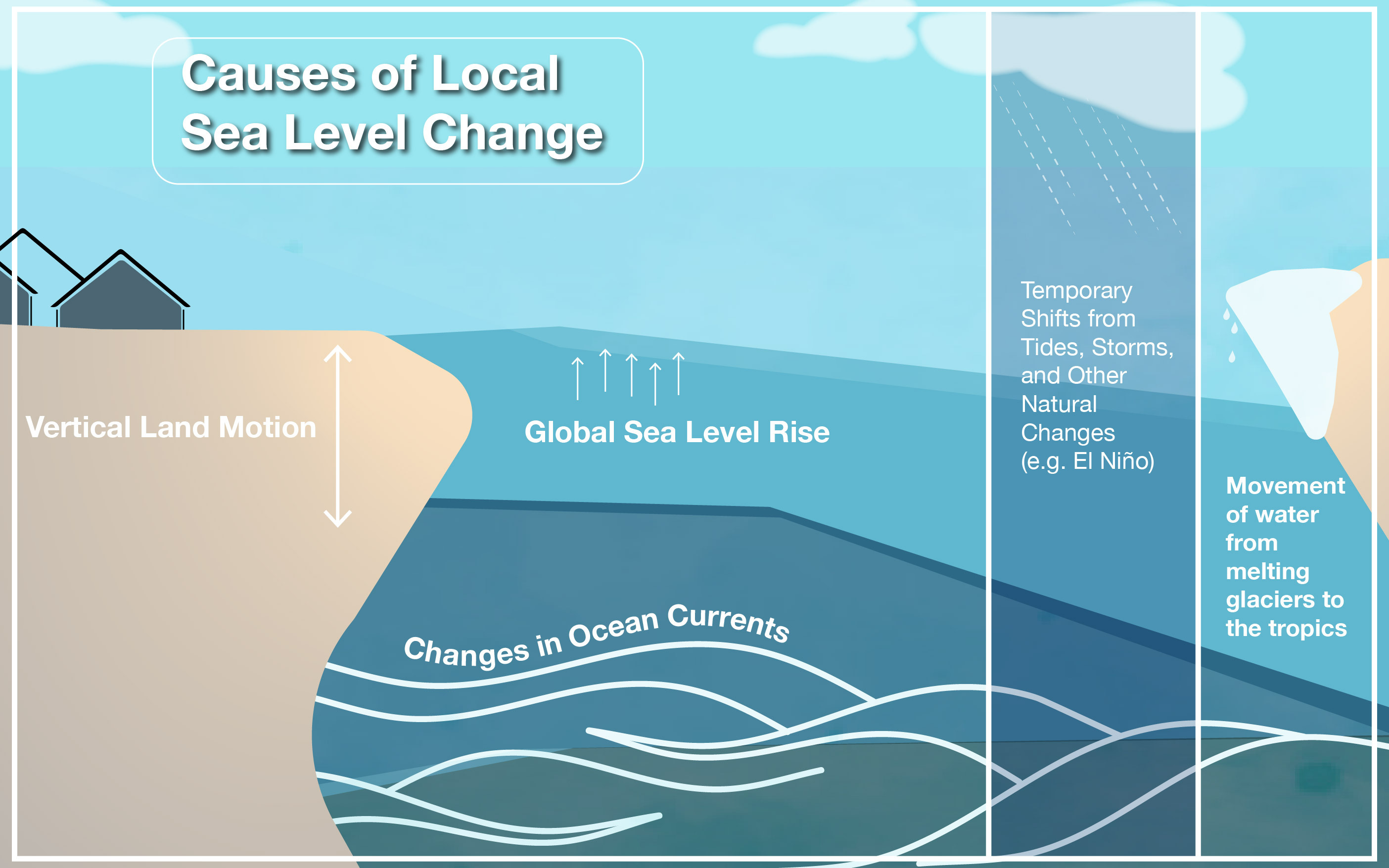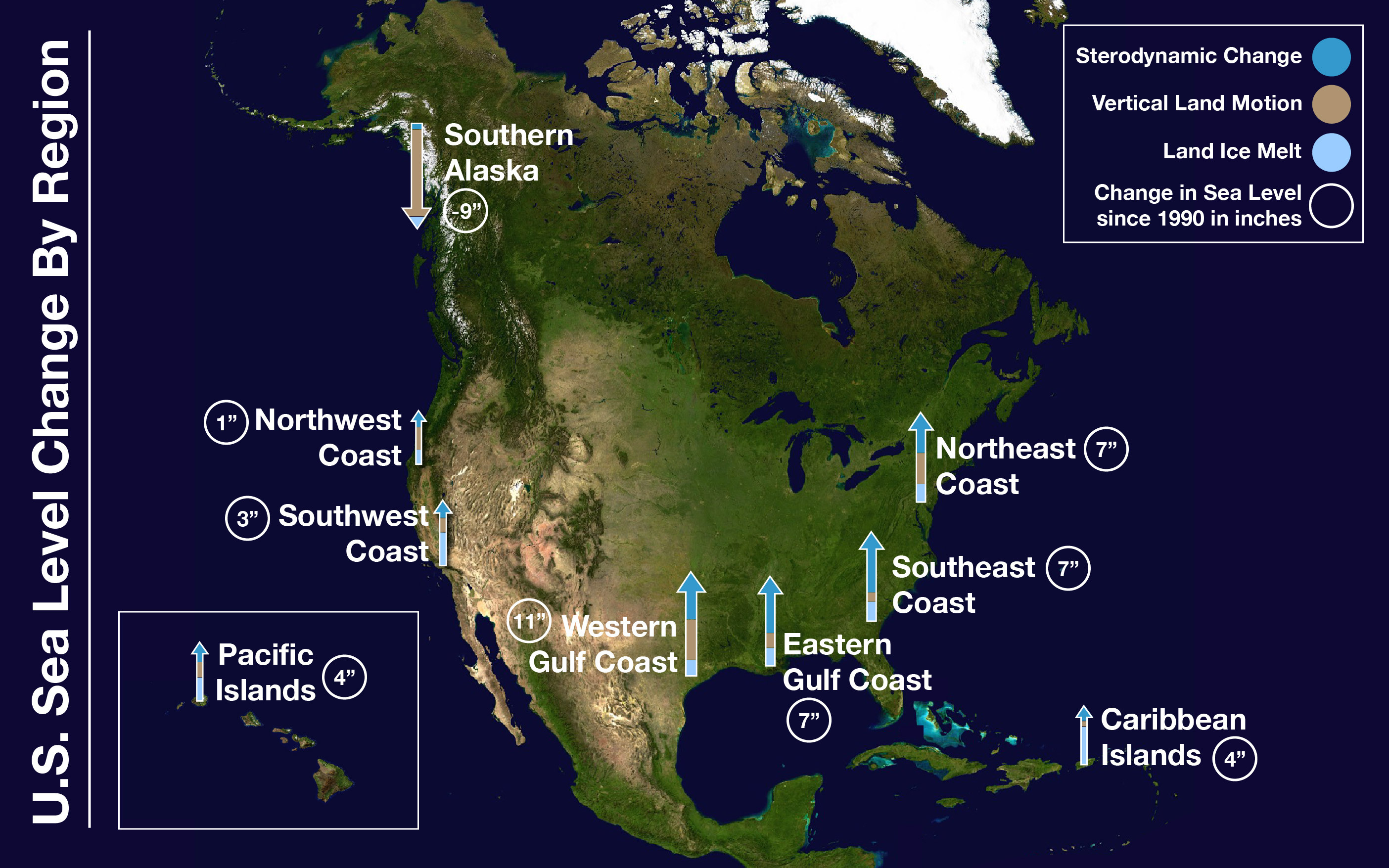Global vs. Local Sea LevelGlobal Versus Local Sea Level
The global sea level is the average ocean height across the entire planet. It gives an overall picture of how sea levels are changing and how the ocean is responding to global warming. Local Sea Level refers to the sea level at a specific location. It is often considered synonomous with relative sea level, which is the height of sea level compared to the land next to it. The local sea level depends on many factors. Changes in land height, ocean currents, and other natural factors all play a role. When factored in, local sea level rise can differ from the global rise by 100% or more.
Factors Affecting Local Sea LevelLand Height, Ocean Currents, and Other Factors Affecting Local Sea Level

Over years, land can move up or down. This land movement is called vertical land motion. The land moves up and down from natural causes, such as tectonic plates moving or sediment settling, and human causes, like pumping out groundwater or removing fossil fuels from the ground causing land to sink.
When the land next to the ocean sinks, it has the apparent effect of the sea level going up faster in that area. This movement of land downward is called subsidence. Conversely, when the land rises, it can cause the sea level relative to land to stay constant or go down. When land rises, it is referred to as uplift. Vertical land motion encompasses both subsidence and uplift.
Changes to ocean currents from climate change can also play a role in local sea level rise over time. Ocean currents are like rivers in the sea and help transport heat around the planet. Warmer water and added freshwater from rapidly melting ice sheets to the ocean impact the ocean currents causing them to shift their speed or location slightly. These shifts can then impact the sea levels in a particular area. These changes are part of what is called sterodynamic sea level change. This is the combined effect on sea level from changes in the ocean’s temperature, saltiness, and motion.

These local and regional changes impact how fast sea levels are rising in that area. That’s because these happen in addition to global sea level rise. So if the land is sinking next to rapidly warming waters, that local sea level will often rise faster than the global sea level. In the United States, local sea levels are rising faster in the Gulf Coast and Mid-Atlantic regions in particular.
Over hours or days, tides and weather also make local sea levels rise and fall temporarily. These wiggles happen on top of the starting sea level height. For many areas, as the starting sea level rises each year due to climate change, the impacts from tides and storms are getting worse.
Dive Deeper: More about the factors that cause sea level to change locally.